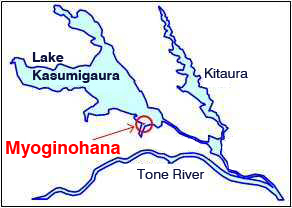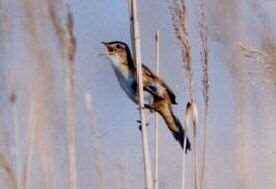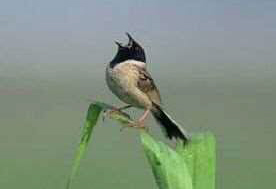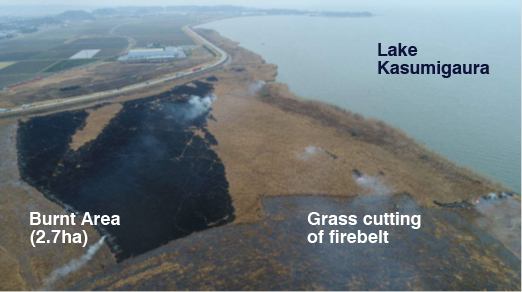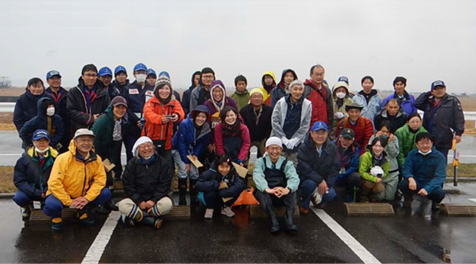Huge reed communities spread at the marshland of Myoginohana, a part of Lake Kasumigaura. But such a reed bed needs to be refreshed, by burning the old dead reeds off the field before spring comes, aiming at the smooth growth of fresh reeds. Such a recycling process is important for the conservation of reed communities.
"Myoginohana" is the home to more than 300 species of plants, including 19 precious species. There are many wild birds living in this reed bed, too, including Japanese marsh warblers*1 and Japanese reed buntings*2, which are also precious birds in Japan. Some raptors are also living there. So overall, the activity in this event is to help restore the natural growth of flora and fauna.
